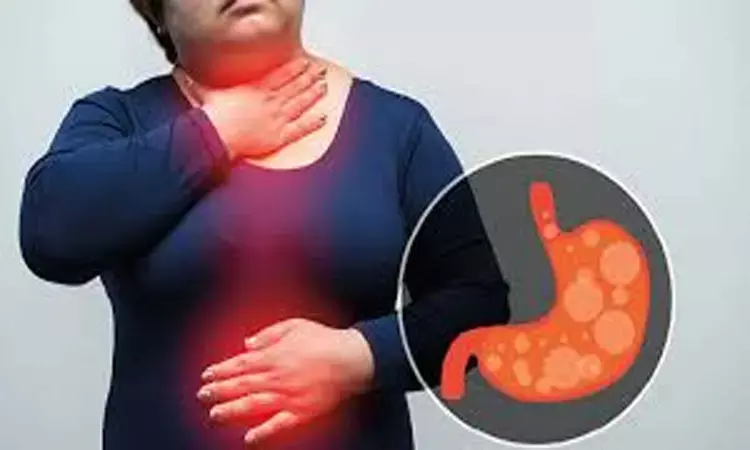- Home
- Medical news & Guidelines
- Anesthesiology
- Cardiology and CTVS
- Critical Care
- Dentistry
- Dermatology
- Diabetes and Endocrinology
- ENT
- Gastroenterology
- Medicine
- Nephrology
- Neurology
- Obstretics-Gynaecology
- Oncology
- Ophthalmology
- Orthopaedics
- Pediatrics-Neonatology
- Psychiatry
- Pulmonology
- Radiology
- Surgery
- Urology
- Laboratory Medicine
- Diet
- Nursing
- Paramedical
- Physiotherapy
- Health news
- Fact Check
- Bone Health Fact Check
- Brain Health Fact Check
- Cancer Related Fact Check
- Child Care Fact Check
- Dental and oral health fact check
- Diabetes and metabolic health fact check
- Diet and Nutrition Fact Check
- Eye and ENT Care Fact Check
- Fitness fact check
- Gut health fact check
- Heart health fact check
- Kidney health fact check
- Medical education fact check
- Men's health fact check
- Respiratory fact check
- Skin and hair care fact check
- Vaccine and Immunization fact check
- Women's health fact check
- AYUSH
- State News
- Andaman and Nicobar Islands
- Andhra Pradesh
- Arunachal Pradesh
- Assam
- Bihar
- Chandigarh
- Chattisgarh
- Dadra and Nagar Haveli
- Daman and Diu
- Delhi
- Goa
- Gujarat
- Haryana
- Himachal Pradesh
- Jammu & Kashmir
- Jharkhand
- Karnataka
- Kerala
- Ladakh
- Lakshadweep
- Madhya Pradesh
- Maharashtra
- Manipur
- Meghalaya
- Mizoram
- Nagaland
- Odisha
- Puducherry
- Punjab
- Rajasthan
- Sikkim
- Tamil Nadu
- Telangana
- Tripura
- Uttar Pradesh
- Uttrakhand
- West Bengal
- Medical Education
- Industry
Asymptomatic Barrett's esophagus patients exhibit pathological reflux despite PPI treatment: Study

A new study published in the journal of Clinical Gastroenterology and Hepatology showed that despite using proton pump inhibitor (PPI), over one-third of Barrett’s esophagus (BE) patients who are asymptomatic show pathological reflux on pH monitoring. However, another third of individuals using standard-dose PPI had normal AET. A 9-fold higher incidence of neoplasia is linked to pathological reflux.
The patients with Barrett's esophagus who have abnormal acid exposure can be identified using esophageal function testing. By identifying pathological reflux, these tests offer useful risk classification, which allows for focused surveillance and early management to stop neoplastic change in this high-risk patient group. Thus, this study was set to ascertain how esophageal function testing may be used to predict disease progression and evaluate acid exposure in BE patients on PPI treatment.
High-resolution manometry and 24-hour pH impedance testing on PPI were used in this investigation of asymptomatic BE patients. While following the same treatment plan, histological results were documented at index endoscopy. Pathological reflux was defined as total acid exposure time (AET) >6% on pH monitoring. Using Youden's index to determine the ideal cut-off, Receiver Operator Characteristic (ROC) analysis was used to assess the prediction efficacy of AET for neoplasia.
There were 135 patients (73% male; 58 ± 15 years). 56 (41%) showed long-segment BE, with a median BE length of C1M2. Standard-dose PPI was used by 67 patients (50%) of the total. Of the 37 patients (27%) with pathological reflux, 25 (67%) were on standard-dose PPI. 33 (39%) of the 84 patients (62%) with normal AET (<4%) were on standard-dose PPI.
Standard-dose PPI (aOR 3.53, p=0.004) and type III esophagogastric junction morphology (aOR 2.64, p=0.036) were shown to be independently linked to pathological reflux on multivariable analysis. At index endoscopy, 13 (10%) individuals had neoplasia (2 adenocarcinomas, 3 high-grade dysplasias, and 8 low-grade dysplasias).
The sole independent predictor of neoplasia was pathological reflux (aOR 9.62, p<0.001). Neoplasia was accurately predicted by AET ≥6% (AUC 0.816, 77% sensitivity, 78% specificity). Overall, 27% of 135 asymptomatic Barrett's esophagus patients had abnormal acid exposure on pH monitoring, even with PPIs. The probability of neoplasia was independently increased and accurately predicted by acid exposure duration ≥6%.
Source:
Vespa, E., Viale, E., Fasulo, E., Barchi, A., Marabotto, E., Pesce, M., Piccirelli, S., Pasta, A., Mandarino, F. V., Fanizza, J., Fratto, M. C., Cesaro, P., Sarnelli, G., Passaretti, S., Danese, S., & Savarino, E. V. (2025). Esophageal function testing identifies Barrett’s esophagus patients with pathological acid exposure at risk for neoplasia. Clinical Gastroenterology and Hepatology: The Official Clinical Practice Journal of the American Gastroenterological Association. https://doi.org/10.1016/j.cgh.2025.10.017
Neuroscience Masters graduate
Jacinthlyn Sylvia, a Neuroscience Master's graduate from Chennai has worked extensively in deciphering the neurobiology of cognition and motor control in aging. She also has spread-out exposure to Neurosurgery from her Bachelor’s. She is currently involved in active Neuro-Oncology research. She is an upcoming neuroscientist with a fiery passion for writing. Her news cover at Medical Dialogues feature recent discoveries and updates from the healthcare and biomedical research fields. She can be reached at editorial@medicaldialogues.in
Dr Kamal Kant Kohli-MBBS, DTCD- a chest specialist with more than 30 years of practice and a flair for writing clinical articles, Dr Kamal Kant Kohli joined Medical Dialogues as a Chief Editor of Medical News. Besides writing articles, as an editor, he proofreads and verifies all the medical content published on Medical Dialogues including those coming from journals, studies,medical conferences,guidelines etc. Email: drkohli@medicaldialogues.in. Contact no. 011-43720751


